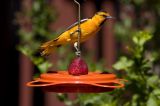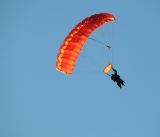- Forum
- Photography and Camera Forum
- Taking the Photo | Editing | The art of Photography!
- Tips and Taking Photos
- advice on falling snow focus
advice on falling snow focus
-
 Topic Author
Topic Author
- ozman1865
- Lone Wolf
-
- Canon 50d, Canon 5D Mark II, AE-1, AV-1, AT-1, AS-6 Water Camera
- Followers: 25
- Posts: 104
-
Points:
20
Post #7020
I was wanting to hear from some of you long time shooters about how to get good focus on falling snow. I would love to be able to catch some good winter photos this year and today was our first snow and I was struggling on catching the snowfall. I guess my question is what is best to use for the focus and what depth should I be shooting to catch the good snowfall shots. I dont think I will have much of an issue with static snow once it has fallen but would love to be able to catch action shots with the falling snow or scene shots with the falling snow. Any advice would be greatly appreciated. show me the magic. LOL look forward to hearing from you all
Jeff
-

- KVRNut
- Newbie
- Followers: 4
-
Points:
10
Post #7223
-

- waynescook
- Has the Hang of it
-
- Cannon 10D
- Followers: 7
- Posts: 61
-
Points:
22
Post #7237
Some day I'd like to learn how to shoot manually; I hear you can learn quite a lot!
WCBIRDSNLANDSC
-
 Topic Author
Topic Author
- ozman1865
- Lone Wolf
-
- Canon 50d, Canon 5D Mark II, AE-1, AV-1, AT-1, AS-6 Water Camera
- Followers: 25
- Posts: 104
-
Points:
20
Post #7242
-

- Monti Leehsu
- Lone Wolf
- Nikon D300
- Followers: 22
- Posts: 172
-
Points:
446
Post #7373
ozman1865 wrote: Thank you so much for the heads up on different possibilities now I will have to wait for the next snow so I can try them out. We here in Kansas arent known for our great snowfalls so guess I will need to be a quick learner and see if I can make your suggestions work. I will post some of the attempts once I get that chance. thanks again Wayne and Kvr most appreciated information
Be sure to post your photos up afterward s. I would like to see how you make out.
-

- Screamin Scott
- Moderator
-
- Nikon D610, Nikon D7100, Nikon D300, Olympus OMD E-M5 MarkII, Olympus OM-D E-M10, Olympus Pen E-P3 + film SLR's
- Followers: 1384
- Posts: 6855
-
Points:
39981
Post #7389
-

- PBowling
- Newbie
- Followers: 0
-
Points:
0
Post #7394
-
 Topic Author
Topic Author
- ozman1865
- Lone Wolf
-
- Canon 50d, Canon 5D Mark II, AE-1, AV-1, AT-1, AS-6 Water Camera
- Followers: 25
- Posts: 104
-
Points:
20
Post #7400
Jeff
- Forum
- Photography and Camera Forum
- Taking the Photo | Editing | The art of Photography!
- Tips and Taking Photos
- advice on falling snow focus
Latest Reviews
The Canon EOS R100 is an entry-level mirrorless camera introduced in 2023. But just because it’s an entry-level camera doesn’t mean it’s a bare-bones camera. Find out why in this review!
Nikon’s retro-looking Nikon Zfc is anything but retro. Under its classic body is a host of features and amenities that make it a worthwhile compact mirrorless camera for 2024.
The Canon EOS R50 is one of the newest R-system cameras from Canon. Is it worth your money? Find out all the details you need to know in this comprehensive review.
The Sony FE 70-200mm f/2.8 GM OSS II is Sony’s flagship mirrorless zoom lens. As such, it’s loaded with features and has a top-shelf build quality that makes it a top pick!
Latest Articles
Creating impactful photos of landscapes depends on many factors, not the least of which is your talent behind the lens. This guide explores other elements required for the best product.
The Canon EOS R100 is an entry-level mirrorless camera introduced in 2023. But just because it’s an entry-level camera doesn’t mean it’s a bare-bones camera. Find out why in this review!
Are you ready to upgrade your camera? Before buying new, you might consider the value of purchasing used gear to save money.
The Olympus OM-D E-M10 Mark IV is a micro four thirds camera released in 2020. It’s an entry-level system along with the OM-D E-M5 Mark III. Use this guide to determine which one is best for you!
Blue hour photography might not be as well known as golden hour photography, but it is every bit as good a time to create epic images of landscapes. Learn how in this quick tutorial!
Nikon’s retro-looking Nikon Zfc is anything but retro. Under its classic body is a host of features and amenities that make it a worthwhile compact mirrorless camera for 2024.
Moving from taking snapshots of your dog to creating beautiful images doesn’t have to be that difficult! Use the tips outlined in this dog photography guide, and you’ll get better results in no time.
Acrylic print photos are a beautiful way to display your favorite images. But they don’t come without some questions. Get all the answers you need about this medium in this guide!














